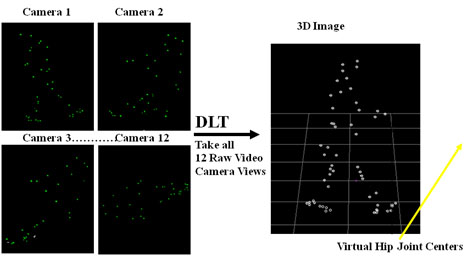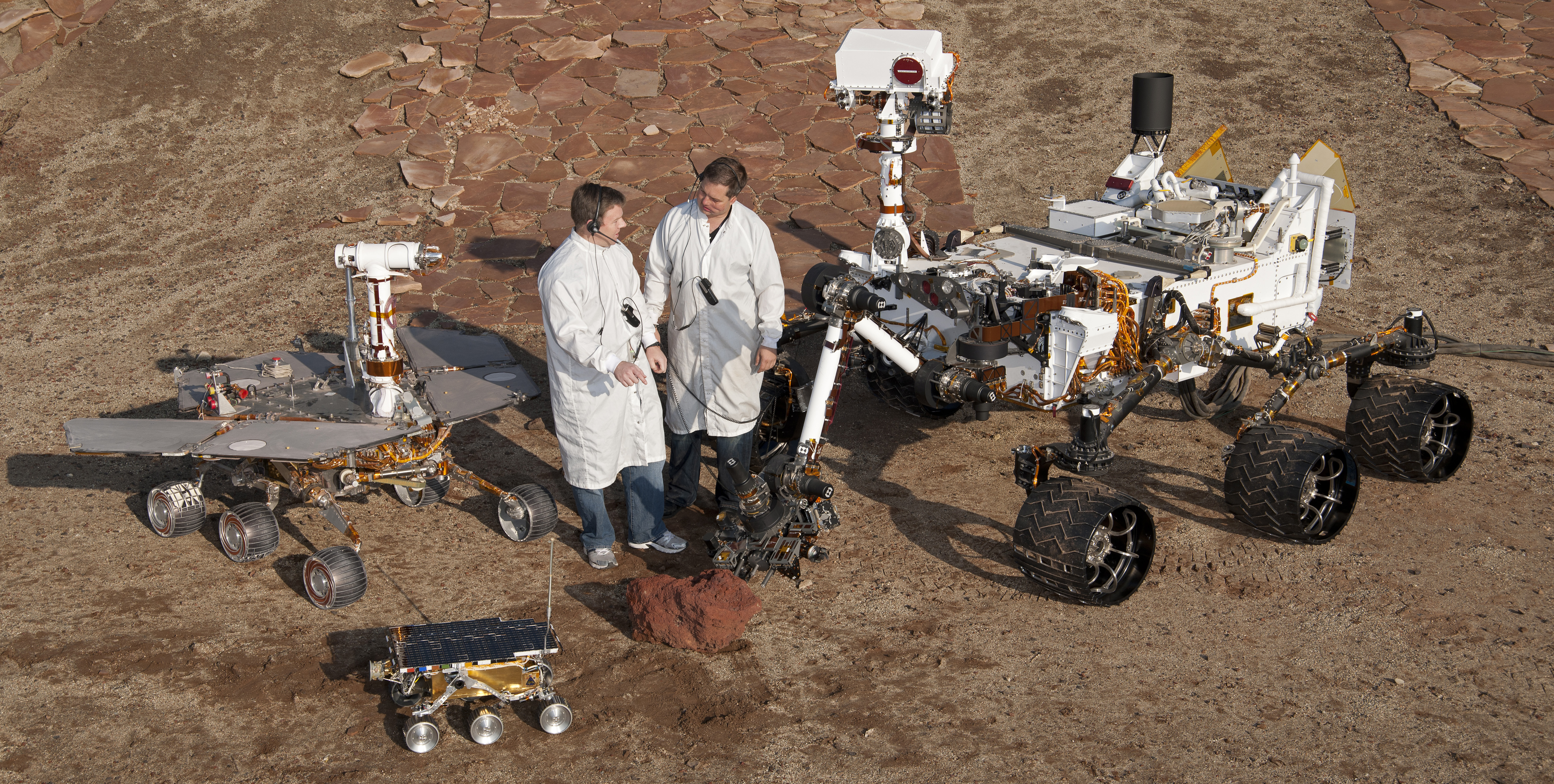|
Sensing Floor
A sensing floor is a floor with embedded sensors. Depending on their construction, these floors are either monobloc (e.g. structures made of a single frame, carpets).Joseph Paradiso, Craig Abler, Kai-yuh Hsiao, Matthew ReynoldsThe magic carpet: physical sensing for immersive environments CHI '97 Extended Abstracts on Human Factors in Computing Systems, 1997. or modular (e.g. tiled floors, floors made of stripes of sensors). The first sensing floor prototypes were developed in the 1990s, mainly for human gait analysis. Such floors are usually used as a source of sensing information for an ambient intelligence. Depending on the type of sensors employed, sensing floors can measure load (pressure), proximity (to detect, track, and recognize humans), as well as the magnetic field (for detecting metallic objects like robots using magnetometers). Sensing floors have a variety of usages: * Gait analysis Gait analysis is the systematic study of animal locomotion, more specifically the ... [...More Info...] [...Related Items...] OR: [Wikipedia] [Google] [Baidu] |
Floor
A floor is the bottom surface of a room or vehicle. Floors vary from wikt:hovel, simple dirt in a cave to many layered surfaces made with modern technology. Floors may be stone, wood, bamboo, metal or any other material that can support the expected load. The levels of a building are often referred to as floors, although sometimes referred to as storeys. Floors typically consist of a subfloor for support and a floor covering used to give a good walking surface. In modern buildings the subfloor often has electrical wiring, plumbing, and other services built in. As floors must meet many needs, some essential to safety, floors are built to strict building codes in some regions. Special floor structures Where a special floor structure like a floating floor is laid upon another floor, both may be called subfloors. Special floor structures are used for a number of purposes: * Balcony, a platform projecting from a wall * Floating floor, normally for noise or vibration reductio ... [...More Info...] [...Related Items...] OR: [Wikipedia] [Google] [Baidu] |
Sensor
A sensor is often defined as a device that receives and responds to a signal or stimulus. The stimulus is the quantity, property, or condition that is sensed and converted into electrical signal. In the broadest definition, a sensor is a device, module, machine, or subsystem that detects events or changes in its environment and sends the information to other electronics, frequently a computer processor. Sensors are used in everyday objects such as touch-sensitive elevator buttons ( tactile sensor) and lamps which dim or brighten by touching the base, and in innumerable applications of which most people are never aware. With advances in micromachinery and easy-to-use microcontroller platforms, the uses of sensors have expanded beyond the traditional fields of temperature, pressure and flow measurement, for example into MARG sensors. Analog sensors such as potentiometers and force-sensing resistors are still widely used. Their applications include manufacturing and machinery ... [...More Info...] [...Related Items...] OR: [Wikipedia] [Google] [Baidu] |
Ambient Intelligence
Ambient intelligence (AmI) refers to environments with electronic devices that are aware of and can recognize the presence of human beings and adapt accordingly. This concept encompasses various technologies in consumer electronics, telecommunications, and computing. Its primary purpose is to enhance user interactions through context-aware systems. AmI aims to create environments where devices communicate seamlessly with users, leveraging data from interconnected systems. A common example of Aml is the Internet of things (IoT), which integrates everyday devices into networks that provide intelligent responses based on user behavior. The term "ambient intelligence" was coined in the late 1990s by Eli Zelkha and his team at Palo Alto, California, Palo Alto Ventures. The project envisioned a future where technology would seamlessly blend with daily life. In the early 2000s, the concept gained further attention when the Information Society and Technology Advisory Group (ISTAG) of th ... [...More Info...] [...Related Items...] OR: [Wikipedia] [Google] [Baidu] |
Gait Analysis
Gait analysis is the systematic study of animal locomotion, more specifically the study of human motion, using the eye and the brain of observers, augmented by instrumentation for measuring body movements, biomechanics, body mechanics, and the activity of the muscles. Gait analysis is used to assess and treat individuals with conditions affecting their ability to walk. It is also commonly used in sports biomechanics to help athletes run more efficiently and to identify posture-related or movement-related problems in people with injuries. The study encompasses Quantification (science), quantification (introduction and analysis of measurable parameters of gaits), as well as interpretation, i.e. drawing various conclusions about the animal (health, age, size, weight, speed etc.) from its gait pattern. History The pioneers of scientific gait analysis were Aristotle in ''De Motu Animalium'' (On the Gait of Animals) and much later in 1680, Giovanni Alfonso Borelli also called ''De Mot ... [...More Info...] [...Related Items...] OR: [Wikipedia] [Google] [Baidu] |
Robotic Mapping
Robotic mapping is a discipline related to computer vision and cartography. The goal for an autonomous robot is to be able to construct (or use) a map (outdoor use) or floor plan (indoor use) and to localize itself and its recharging bases or beacons in it. Robotic mapping is that branch which deals with the study and application of the ability to localize itself in a map/plan, and sometimes to construct the map or floor plan by the autonomous robot. Evolutionarily shaped blind action may suffice to keep some animals alive. For some insects, for example, the environment is not interpreted as a map, and they survive only with a triggered response. A slightly more elaborate navigation strategy dramatically enhances the capabilities of the robot. Cognitive maps enable planning capacities and the use of current perceptions, memorized events, and expected consequences. Operation The robot has two sources of information: the idiothetic and the allothetic sources. When in motion, a ... [...More Info...] [...Related Items...] OR: [Wikipedia] [Google] [Baidu] |
Sensors
A sensor is often defined as a device that receives and responds to a signal or stimulus. The stimulus is the quantity, property, or condition that is sensed and converted into electrical signal. In the broadest definition, a sensor is a device, module, machine, or subsystem that detects events or changes in its environment and sends the information to other electronics, frequently a computer processor. Sensors are used in everyday objects such as touch-sensitive elevator buttons ( tactile sensor) and lamps which dim or brighten by touching the base, and in innumerable applications of which most people are never aware. With advances in micromachinery and easy-to-use microcontroller platforms, the uses of sensors have expanded beyond the traditional fields of temperature, pressure and flow measurement, for example into MARG sensors. Analog sensors such as potentiometers and force-sensing resistors are still widely used. Their applications include manufacturing and machiner ... [...More Info...] [...Related Items...] OR: [Wikipedia] [Google] [Baidu] |
Robotics
Robotics is the interdisciplinary study and practice of the design, construction, operation, and use of robots. Within mechanical engineering, robotics is the design and construction of the physical structures of robots, while in computer science, robotics focuses on robotic automation algorithms. Other disciplines contributing to robotics include electrical engineering, electrical, control engineering, control, software engineering, software, Information engineering (field), information, electronics, electronic, telecommunications engineering, telecommunication, computer engineering, computer, mechatronic, and materials engineering, materials engineering. The goal of most robotics is to design machines that can help and assist humans. Many robots are built to do jobs that are hazardous to people, such as finding survivors in unstable ruins, and exploring space, mines and shipwrecks. Others replace people in jobs that are boring, repetitive, or unpleasant, such as cleaning, ... [...More Info...] [...Related Items...] OR: [Wikipedia] [Google] [Baidu] |
User Interface Techniques
An interaction technique, user interface technique or input technique is a combination of hardware and software elements that provides a way for computer users to accomplish a single task. For example, one can go back to the previously visited page on a Web browser by either clicking a button, pressing a key, performing a mouse gesture or uttering a speech command. It is a widely used term in human-computer interaction. In particular, the term "new interaction technique" is frequently used to introduce a novel user interface design idea. Definition Although there is no general agreement on the exact meaning of the term "interaction technique", the most popular definition is from the computer graphics literature: A more recent variation is: The computing view From the computer's perspective, an interaction technique involves: * One or several input devices that capture user input, * One or several output devices that display user feedback, * A piece of software ... [...More Info...] [...Related Items...] OR: [Wikipedia] [Google] [Baidu] |




